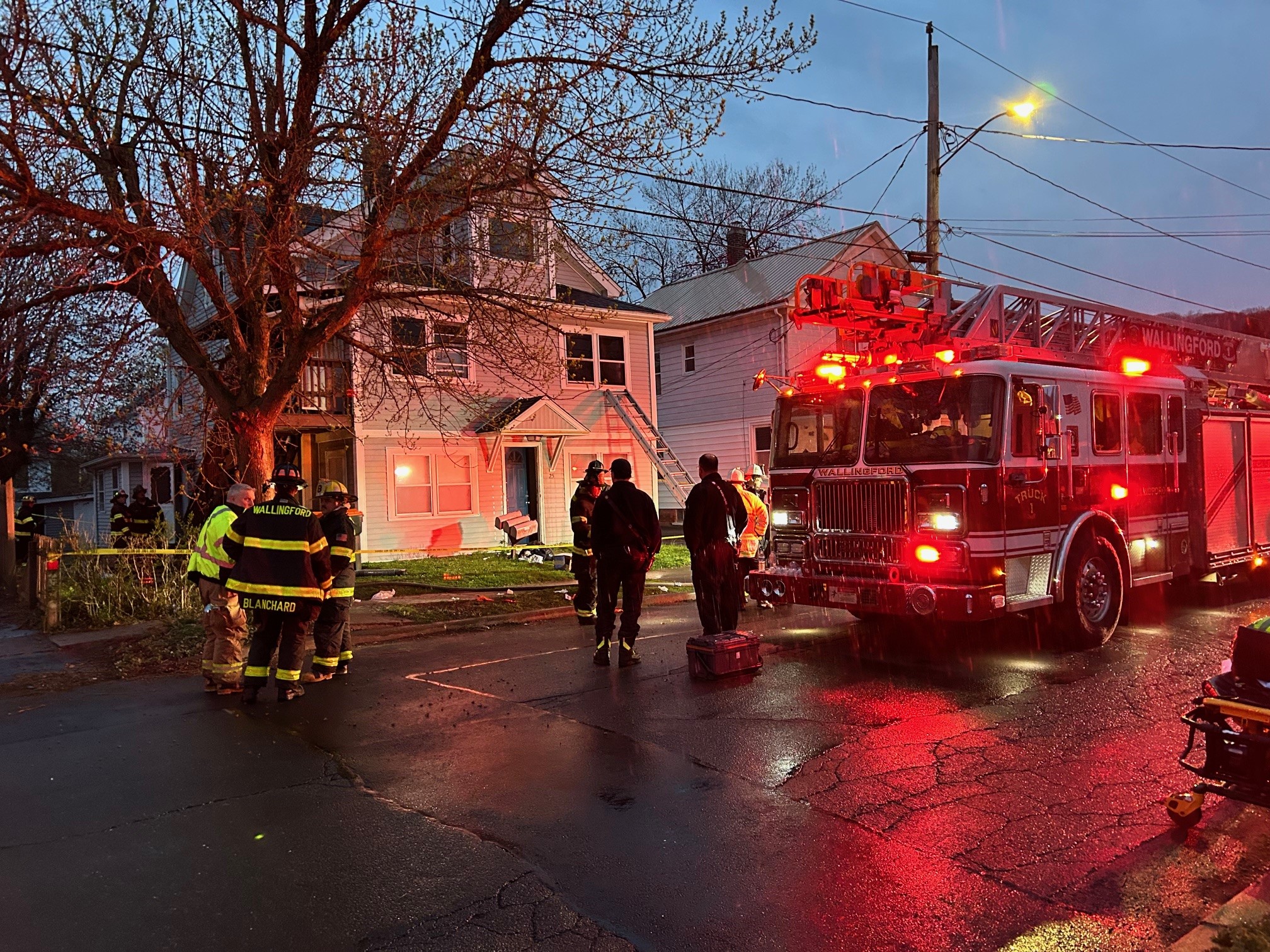"If my calculations are correct, when this baby hits 88 miles per hour... you're gonna see some serious $@%&!"
Dr. Brown was a man on a mission in the movie "Back to the Future." His goal? Build a time machine.
Dr. Ronald Mallett, professor of physics at the University of Connecticut, is on the same mission. It's some serious $@%& alright. But Mallett says time travel will soon be much more than just science fiction.
The Drive
"When I was 10 years old -- I was the oldest of 4 children -- my dad was a television repairman in the Bronx. He was one of these people that was just larger than life and lots of fun. He played hard and worked hard. I adored him," Mallett said.
But Mallett's dad had a weak heart. At 33, he suffered a massive heart attack and died.
Local
"It completely devastated me. I was inconsolable. My world came crashing down," Mallett said. "I entered into a deep depression at a very young age."
Mallett took strength from his love of reading.
"When I was 11, I came upon H.G. Wells' "Time Machine." I thought, if I could build a time machine, I could go back in the past and see him again," said Mallett. "It became a secret obsession. That gave me hope, that gave me a goal."
A year later, that turned into an obsession. At 12, Mallett read a book about Einstein.
"I didn't really understand much of it, but I did glean that time doesn't move independent of us and that we could affect the flow of time. It was then that I decided if I could understand Einstein, I could build a time machine."
He had a dream, but also had what, to many, would be an insurmountable obstacle before him.
"With the death of my dad, my family plunged into poverty," Mallett said. "College wasn't something in my future."
So he decided to change his future. Mallett entered the service so he could save money for college, then went to Penn State and worked toward his bachelor's and master's degrees and a Ph.D. in physics.
The entire time, he kept his passion a secret.
The Research
Who of us has not wondered 'What if I could change something in my past'? 'What's going to happen in the future'?"
Questions like these that have lead to many late-night conversations between students across the globe, including some of Mallett's own students at the University of Connecticut, but the real question is whether it's really possible or just science fiction.
"Einstein's "General Theory of Relativity" is the theory of gravity. It connects gravity with space and time," said Mallett. "That's where it starts."
To break down the complicated theories of how time and space can be distorted by lasers, Mallet uses a breakfast beverage.
"Imagine a cup of coffee in front of you. Think of that coffee in your cup as being like empty space. Think of your spoon as being a circulating light beam. If you stir, it starts swirling. That's what the light beam is doing to space - it's causing empty space when the coffee swirls around," said Mallett.
"If I drop in a sugar cube, the coffee will drag the sugar cube around. In the case of empty space, it's a neutron - part of every atom. If we put it in empty space, the space will drag the neutron around the same way the coffee drags the sugar cube around. That way, we can see space is being twisted around."
He said that's the basis of Einstein's theory - whatever you do to space also happens to time.
"If I stir space strongly enough, time, connected to space, it will actually twist that timeline into a loop," he said. "I'm studying how we can use that to send information back in time in a binary code."
Information that if received, could help prevent disasters.
"My particular work or focus isn't sending people back in time. It's sending information back, which could be even more important. What if you could tell people about a particular catastrophe, an earthquake?"
Theoretically, you could warn people about disasters or even heart attacks.
But here's the big problem. The information, Mallett said, could only go back in time as far back as there's a device to receive that information, and that device wasn't around when his dad was alive. It will only be around when Mallett creates it and turns it on.
"We won't be able to communicate with those who went before us, but if I'm right - our descendants will be able to communicate with us," he said. "I won't see my father again, but I think my work is a fitting memorial to my father."
The Grandfather Paradox
So let's say, one day we are able to send back information or even people in time. It leads to one of the most famous paradoxes associated with time travel, Mallett said.
"It's the so called grandfather paradox," he said. "Suppose you go back and do something like preventing your grandfather from meeting your grandmother. No parents, no you. How could you exist and go back and change the past?."
The answer? We might not be alone, but not in the way you might think.
"Our world, our universe, may not just be by itself. We might be just one of many parallel universes. It leads to the possibility that when you make a decision, there's another you who made the opposite decision in a parallel universe."
According to the theory of parallel universes, for each decision there's another universe created.
"If you apply the parallel universe idea to time travel, what it means is that the instant you arrive in the past you're in the split. A new universe. You could prevent it, but in that new universe, you may never have been born into it," he said.
Mallett said if we do get to the point where we can traverse the universes, it's something you'll do for the rest of your days.
"You can never return home again. You can live out your life in that particular universe you're in. What it comes down to is that we won't really know what will happen until we turn the first time machine on. What we think of as being the past could be something that was altered already."
The Future
Mallett has the research and the theories. He even has a laser specialist. What he needs now is money - at least $10 million.
That's where Hollywood comes in.
Spike Lee teaches film at New York University. Last year, two of his students heard about a book Mallett wrote. They bought it, read it and took it to Spike.
"UConn had invited Spike to give a talk this past March. When he came up, he asked to see me. I thought 'Yeah, right.' But we met and talked for a couple of hours and I gave him a copy of my book," Mallett said. "He went overseas and I thought I'd never hear from him again. But when he came back, he called me and said, 'This is a great book. I'd like to create a movie out of this.' He said, 'I'll have my people call your people.'"
In June 2008, the contract for Time Traveler was signed. Things are now moving forward quickly, said Mallett, who hopes to use the publicity from the movie to do fundraising for the research.
"Spike feels that having my work known nationally in that way will be able to attract the huge investors we need," Mallett said.
The script is now in development. Lee and his wife showed up to a recent event Mallett was speaking at in New York to use as input for the script. Casting is the next big step.
"For me personally, I'm not too concerned over who will play me," Mallett said. "What's even more important is who will be playing my father, because to see him on the silver screen, it will be like Spike brought back my dad."
To visit Dr. Ronald L. Mallett's UConn homepage, click here.



